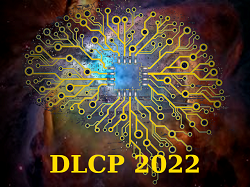Speaker
Description
Machine learning (ML) methods began to be used in the MLIT laboratory from the very beginning of its organization in 1966, when one of the main tasks of the LVTA was the automation of film data processing used at that time in physics experiments. This included the problems of automating film measurements and calibration of the then-built scanning machines Spiral Reader and AELT (Automat on Elektron Tube) scanning tables, as well as the acquired HPD scanner. These tasks of event reconstruction, calibrating measuring devices and physical hypothesis testing were still relevant, although they were solved by classical methods of computational statistics, first on tube and later on transistor computers, not yet equipped with programming languages at the time.
With the advent of experiments with electronic data acquisition directly into the memory of more powerful computers equipped with programming languages such as Fortran, it became possible to apply robust fitting methods and wavelet analysis, the LVTA was one of the first among other physics centers in the 1990s to apply neural networks and cellular automata for tracking and other applied tasks in biology, medicine, earth physics and pattern recognition.
However, the real heyday of neural network methods application in physics and related fields came with new advances in computer technology, GPU cards, Supercomputers and the advent of the Big Data era. Big Data required radically new approaches, and new technologies made possible the application of deep neural networks with their amazing ability to solve most basic ML problems in classification, pattern recognition, prediction and hypothesis testing. The diversity of tasks coming to MLIT from JINR laboratories and collaborating institutes required the use of a wide range of different types of deep neural networks: multilayer perceptrons, autoencoders, convolutional, recurrent and graph neural networks, and recently, transformers with their attention mechanism used to increase weights of the most important features of objects under study. The depth of these neural networks, i.e. increase in the number of hidden layers allows to significantly strengthen the descriptive side of neuromodels, i.e. to expand the number of features of the phenomenon under study, though inevitably poses very complicated problems of their training and validation. These problems can be solved in many ways by using different program libraries written in interpretive Python language, using PyTorch framework. Nevertheless, to solve different event reconstruction problems in many High Energy Physics (HEP) experiments, a special library Ariadne, developed at MLIT with participation of performers from Dubna and SPbSU Universities, was required.
Among the problems solved in recent years in MLIT using deep learning methods, we can mention first of all the tasks of processing track data from the experiments BM@N, BES-III, SPD, modeling fine structures in mass distributions of nuclear reaction products, as well as such problems from related fields as atmospheric pollution monitoring using satellite imagery, detection and prevention of agricultural plant diseases.
Prospects for further development of machine learning methods are dictated primarily by new high luminosity and multiplicity HEP experiments, leading to exabyte streams of experimental information, requiring their online filtering and new approaches for ultrafast processing. Most applications from other fields are characterized by the lack of large databases required for training neural networks, which also requires the development of new approaches in the choice of neural network types, their structure and training methods.
| Agreement to place | Participants agree to post their abstracts and presentations online at the workshop website. All materials will be placed in the form in which they were provided by the authors |
|---|

